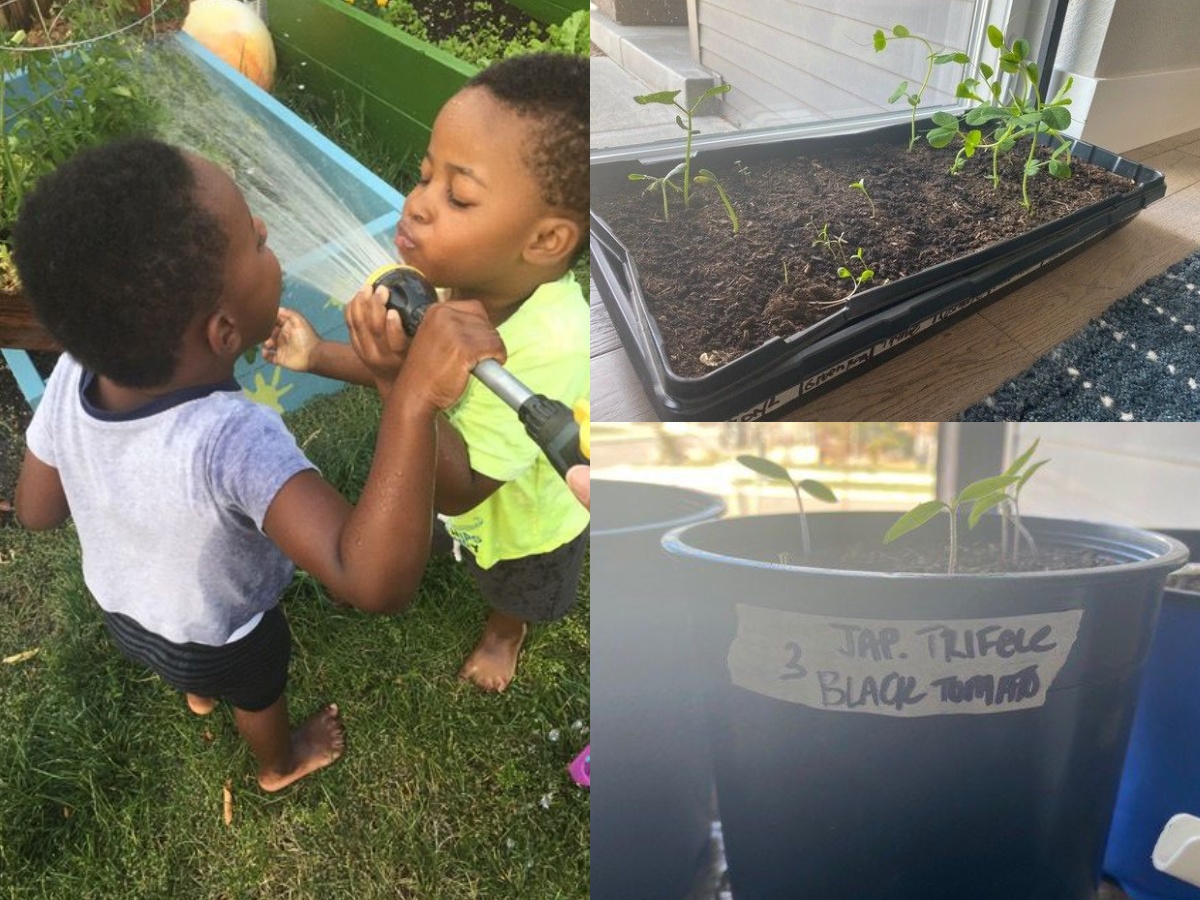
Eight Steps to Getting Your Garden Ready
As spring ushers in visions of colorful blooms and lush landscaping, diehard (and even casual) gardeners are just itching to get outside and get their hands into some dirt. And with Earth Day approaching on April 22, an eagerness to dig into some Colorado soil increases daily.
Central Park Denver is known for its edible landscape, raised garden beds and garden architecture. But did you know that our community is located in Zone 5b (the area of the country that determines planting schedules and climate-friendly crops)? Many local gardeners are usually instructed to wait until mid- to late-May to begin planting in these areas.
So, what’s an anxious gardener to do while following shelter-in-place guidelines and awaiting warmer temperatures?
Garden PREP can be just as satisfying!
Many of the tasks postponed until May can begin now. What’s more – those who gardened last summer probably have materials and tools around the home that can be used today to begin.
- Start Your Garden Now – Indoors!
If you just cannot wait until May to start gardening outdoors, bring the garden indoors!
“March and early April are the perfect time to plant seeds that don’t tolerate frost such as tomatoes, peppers, herbs, pumpkin, watermelon and cantaloupe,” says Conservatory Green neighborhood resident and gardening enthusiast Sarah Conroy. “All you need is a window that gets afternoon sun, planting soil and seeds.”
Conroy, who learned about gardening from her grandfather, shares her passion with her children.
“Teaching your little ones how to grow plants from seed is a great way for them to learn about germination and how to transplant seedlings to larger containers before eventually planting outside. My three boys and I mapped out our garden beds and determined what vegetables would be good companion plants in each bed before choosing the seeds for planting. Digging up soil from your existing garden beds will introduce them to the importance of worms in a garden and soil temperatures, which are vital to plant growth.
“Once you have planted all your seeds according to the packet instructions, you and the kids can sit back and watch little seedlings emerge from the soil. We are all so excited when we see our tomato seedlings emerge and will become delicious vegetables we can enjoy in a few months.”
- Get Your Shed in Order
Even if you don’t have an actual separate structure, now is a great time to tidy up the space in your garage, patio, or wherever you store your tools, pots and other essentials to take inventory of what you can keep or throw out. This is also a prime opportunity to make online purchases of hail and shade cloth, soil thermometers and other items that will likely protect and enhance the lushness of your 2020 garden.
- Clear Out the Debris
Clear out weeds, mulch, and debris. If you’re like most gardeners, you’ve got dead vegetation, labels, weeds and other items littering your space and detracting from the aesthetic of your garden. Put on your overalls, get out that rake and clean up a little.
- Prune!
If you’ve got perennials, trees, and crops that return every year, pruning is a must. Proper pruning encourages strong growth, increases flower and fruit production, improves plant health, and removes damaged stems, limbs, and wild growth.
- Prepare Your Soil
Fourth, prepare the soil if you’ve already got beds from last year. Once the frost has lifted and the soil is workable, you can get out back and start preparing your beds. While the jury is out on the practice of tilling compacted soil, you can order bags of new soil, compost and other amendments to spread over your existing soil now. You can use a soil test kit to see where your pH and nutrient levels are, which will tell you what type of materials you might want to add. All available online.
- Let the Planting Begin!
You can now plant your cold-weather crops such as lettuces, greens and peas. If you’ve got seeds from last year, take them out of that dark, dry, cool storage space and begin planting them in your newly amended dirt. If you’ve got a mail order house that ships seedlings, all the better and you still don’t have to leave the house. And don’t forget to mulch!
- No Yard? No Worries!
Fans of container gardening can get in on the act, too!
For some gardeners, growing vegetables in containers is a necessity. In fact, urban gardening often means growing on rooftops, balconies, or whatever space is available. Herb gardens in window sills and bay windows can be a great sources of natural light and can accommodate smaller pots for basil, rosemary, thyme and other popular herbs.
In addition, tomatoes are always a favorite for those with balconies, patios or rooftops that get full sun every day. Whatever plant is selected, choose as large a container as possible, especially for veggies with deep root systems such as carrots or beets.
8. HAVE FUN!
No matter how long the days might be as we shelter in place, gardeners know that time sure flies when there’s dirt under your fingernails!


